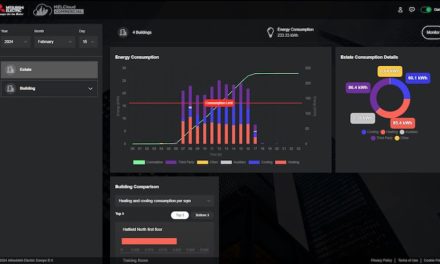 If you’ve been on the industry frontline in recent years, then you’ll know all about the need to reduce the energy that your factory consumes – for commercial if not environmental reasons. Here, Dave Manning-Ohren, of ERIKS, looks at some of the key analysis tools that can reduce factory energy costs
If you’ve been on the industry frontline in recent years, then you’ll know all about the need to reduce the energy that your factory consumes – for commercial if not environmental reasons. Here, Dave Manning-Ohren, of ERIKS, looks at some of the key analysis tools that can reduce factory energy costs
You don’t need surveys and statistics, useful as they are, to know that energy represents a major part of your operating costs and that the cost of energy is rising. This situation isn’t going to change in the foreseeable future and there’s little that we as individuals can do to influence the price per kW. However, what we can do is look at ways of reducing the power used by our production machines and to eliminate, or at least minimise, energy that is wasted.
Talk to energy consultants and you’ll receive a lot of sound advice, ranging from the simple – switch off equipment when it’s not in use, or stop your air lines from leaking – to the more complicated, requiring the installation of variable speed drives, correctly sized motors, or new burners on furnaces or heaters.
It’s all good advice, but before investing in new energy efficient equipment you firstly need to identify where consumption or waste is at its worst and then make an informed decision about the most appropriate measures to implement.
To achieve this you can make use of either dedicated services, available from companies such as ERIKS, or on-site maintenance staff. Either way, there are a number of specialised techniques required, including thermographics, ultrasonics and vibration analysis.
Taking the temperature
Every object, hot or cold, emits energy. The hotter it is, the more energy it emits, and energy emitted is energy wasted. Therefore, by isolating hotspots in the structure of a building or in operating equipment, it’s possible to identify areas where energy can be saved. It’s also worth noting that high temperatures in rotating components such as pumps can indicate potential mechanical problems, perhaps caused by poor lubrication or shaft misalignment. Therefore, regular temperature monitoring can help improve up-time and extend the operating life of equipment.
Temperature monitoring is carried out using portable thermal imaging cameras. These measure infrared radiation and convert the information gathered into a readout in visible light, with varying intensities of temperature being represented by different colours. The latest devices can provide high levels of accuracy and image definition, giving sharp images even when the camera or target is moving. They can be used both for high and low temperatures, so are equally useful for areas such as cold stores or processes where chilling or freezing is required.
 Beyond our hearing
Beyond our hearing
Air, steam and gas leaks, worn bearings and discharges in faulty high voltage systems will often emit sound at frequencies between 20 and 100kHz, which is outside normal human hearing. Detection is via fixed or handheld meters, which essentially convert signals to the audible range and present them on a graphical display. Although interpretation requires a degree of experience, the results can be remarkably accurate, especially when used in areas where there is a saturation of gases or where a wide variety of gases, pressurised vessels and vacuum processes exist.
Out of sight
In a few instances, vibration is a specified machine function. However, in most cases vibration is an indicator of inefficiency, leading to heat, noise and energy losses. Most vibration occurs within rotating systems, often where it is hard to detect and where it only becomes obvious when components (typically bearings) fail.
Measuring vibration can be achieved using small fixed accelerometers, permanently connected to plant wide monitoring systems, or plugged into portable meters. Alternatively, handheld probes can be used where equipment is accessible. In each case, data is normally collected over time, so that deterioration in operating conditions can be identified and resolved before problems occur.
Time to act
Energy prices will continue to rise, so unless your business has deep pockets you need to treat energy efficiency as a priority. That may mean investment in new equipment, but the most important first step is to use simple techniques to ensure that existing plant is not venting profits into the atmosphere through unnecessary energy losses.
Putting energy saving into practice
One company which has put energy saving at the top of its agenda is Coors brewery in Burton. ERIKS was commissioned to carry out a thermal imaging survey of boiler houses, overhead pipework, tank houses, brew house, powder rooms and outside areas. Costing less than £1,000, this highlighted potential savings of around £60,000 per annum, which could be achieved through a relatively modest investment in repair work.
Additionally, the survey identified steam leaks, which were accounting for considerable energy wastage. It is worth bearing in mind that holes or cracks just a few millimetres in size can cost over £200 per week in wasted energy.



